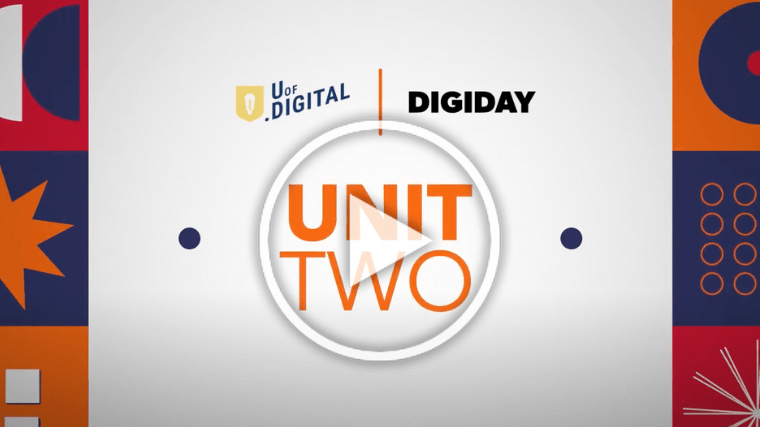
Programmatic for sellers: Understanding identity, programmatic deals, CTV and privacy More from the series →
Programmatic platforms enable buyers and sellers to transact with each other in an automated marketplace setting. This lesson reviews the different programmatic transaction types — open exchange, private marketplace, preferred deals, and programmatic guaranteed — and is intended for those familiar with programmatic advertising and looking to expand their understanding. Understanding the context around programmatic transactions is essential for understanding why buyers and sellers may choose one type over another.
Imagine visiting a large, open-air marketplace where many sellers and buyers come together regularly to transact. Each seller has their tent. Most tents are open to all buyers and sell products on an auction basis.
Certain sellers are confident they have superior products, so they gate off their tent entrances and only let in buyers they know have enough money to buy their wares. Within these “invite-only” tents, they are willing to transact with buyers in unique ways that secure top dollar for the seller while ensuring their buyers get the quality products they want.
The different types of tents represent different types of programmatic marketplaces. The most common programmatic marketplaces are open exchanges, with tents that are open to all buyers, so this is what people typically mean when they refer to programmatic deals.
The open exchange is designed to be a real-time, fair market where supply and demand dictate the price of an ad impression. In an open auction, all advertisers can do business with all publishers and vice versa. Buying ads on the open exchange does not require contracts, commitments or guarantees and offers no priority treatment for a brand or advertiser. The way to win an impression is by paying the highest price.
Buyers and sellers choose an open exchange because it gives them access to volume, and buyers can potentially access inventory at low rates. The trade-off for buyers is precision. Buyers can’t get too precise about how many impressions they purchase on specific sites, which can lead to quality concerns.
In programmatic deals, buyers and sellers agree on transaction terms with each other directly but decide to execute through programmatic platforms to reap the benefits of programmatic technologies. Why do both sides engage in this type of transaction?
Buyer benefits:
- Exclusive access to desirable inventory
- Quality assurance
- Programmatic technology improves targeting, optimization and reporting
Seller benefits:
- Higher prices than the open market
- Guaranteed revenue
- Access to advertisers
Private marketplaces, preferred deals and programmatic guaranteed transactions are all variations of programmatic marketplaces that suit specific buyer and seller desires.
Private marketplace
A private marketplace deal (PMP) is an agreement between a seller and a select group of buyers that helps the buyers secure preferred rates and access to specific ad inventory from the publisher.
This is like an exclusive access area carved out within an open marketplace, where specific publishers can invite specific buyers to buy their inventory on an auction basis.
In exchange for an invite to this exclusive access area, sellers typically impose higher floor rates or price floors to increase the average price they earn per impression.
PMPs are also called:
- Private deals
- Private auctions
- Invite-only auctions
- Closed auctions
Preferred deals
In a preferred deal, unlike in a PMP, the price is not determined by auction. Instead, the buyer agrees to a fixed price set by the publisher.
A buyer in a preferred deal can still use programmatic technology to pass on certain impressions. For example, a buyer could pass on impressions within a preferred deal if they don’t meet the target user criteria or if the programmatic platform’s algorithm tells the buyer that the impression isn’t a good fit for what they are trying to achieve.
Preferred deals are also called:
- Private access
- Unserved fixed rate
- First right of refusal
Programmatic guaranteed
Programmatic guaranteed (PG) is a way of buying ads programmatically with specific, contractual terms, similar to a direct buy. The buyer and seller will agree on the details of the buy, including the CPM rate, the volume of impressions and budget, inventory, ad sizes, and more.
When a seller sets up a PG deal, they are guaranteeing they will sell a certain number of impressions to their buyer based on the terms of the agreement. On the flip side, the buyer guarantees they will buy a certain number of impressions. The critical difference in a PG deal, as opposed to a direct buy from publisher to advertiser, is that all PG impressions are bought programmatically.
Programmatic guaranteed is also called:
- Programmatic direct
- Automated guaranteed
- Programmatic reserved
Programmatic marketplaces recap
- Open auction
- Many buyers competing
- Equal priority
- Private marketplace (PMP)
- Negotiated floor price
- Invitation only
- No guaranteed volumes
- Preferred deals
- Fixed price
- One buyer, one seller
- No guaranteed volumes
- Programmatic guaranteed (PMG)
- Fixed price
- One buyer, one seller
- Guaranteed volumes
Since 2021, publishers have seen advertisers move money from the programmatic open marketplace to private automated options that give publishers more involvement in their ad sales. Because of the private market’s inventory assurance, these impressions can sell for four times the price.
To execute a programmatic deal, buyers use a type of software called a demand-side platform (DSP), while the software sellers use is a supply-side platform (SSP). When using an SSP, sellers can define the parameters of their purchases by setting specific deal terms, such as:
- Inventory: Inventory may include the entire website, specific placements or ad units, or a particular portion of the site.
- Audience: It may be everyone, or it may be specific types of users on the publisher’s site.
- Price: The buyer and seller agree to a specific or minimum price associated with the deal. Sometimes, this rate will be a flat rate; other times, it will simply represent a price floor, the minimum an advertiser can pay to win the impression.
- Priority: Some deals are exclusive to a single buyer, while others are shared across multiple buyers. If multiple buyers share a deal, then each buyer is still competing for the impression but competing against a smaller group of buyers than they would on an open exchange.
When sellers set up a deal within their SSP, they generate a deal ID, which can be shared with specific buyers. Advertisers can set up ad campaigns using a deal ID to access specific deals within a DSP. DSPs tend to be buyers’ preferred way to access these deals because DSPs help marketers with the following:
- Performance: Tracking performance such as app downloads, website visits or online purchases. By tracking everything in one system, the advertiser can see that a person was exposed to a specific ad before visiting a website or making a purchase.
- Control: Buyers have more control when managing all their ads through a single, self-service platform.
- Frequency: Tracking and managing global frequency caps. This means tracking exactly how many times a single user has been exposed to an advertiser’s messaging across the web.
DSPs and SSPs can also be used in private marketplace deals. In the case of a PMP, marketers sometimes use the term “buyer and seller” because there are many different ways a PMP can be created, including:
1. A DSP can set up a PMP directly with an SSP. The SSP may use one or multiple publishers’ inventories as part of the deal, and the DSP can offer the deal to some or all of its advertisers.
2. An agency can set up a PMP directly with an SSP. The SSP may use one or multiple publishers’ inventories as part of the deal, and the agency can offer the deal to one or multiple advertisers.
3. An advertiser or brand can set up a deal directly with an SSP. The SSP may use one or multiple publishers’ inventories as part of the deal.
4. An agency can set up a PMP directly with a publisher. The agency can offer the deal to one or multiple advertisers.
5. Most common: A brand can set up a PMP directly with a publisher. That brand may be the only recipient of the PMP, or the publisher may share it across multiple brands.
There is more than one way to create a PMP, just as there is more than one way to make a programmatic deal. Open marketplaces are the most common, but there are many opportunities for specificity and customization within the programmatic landscape.


